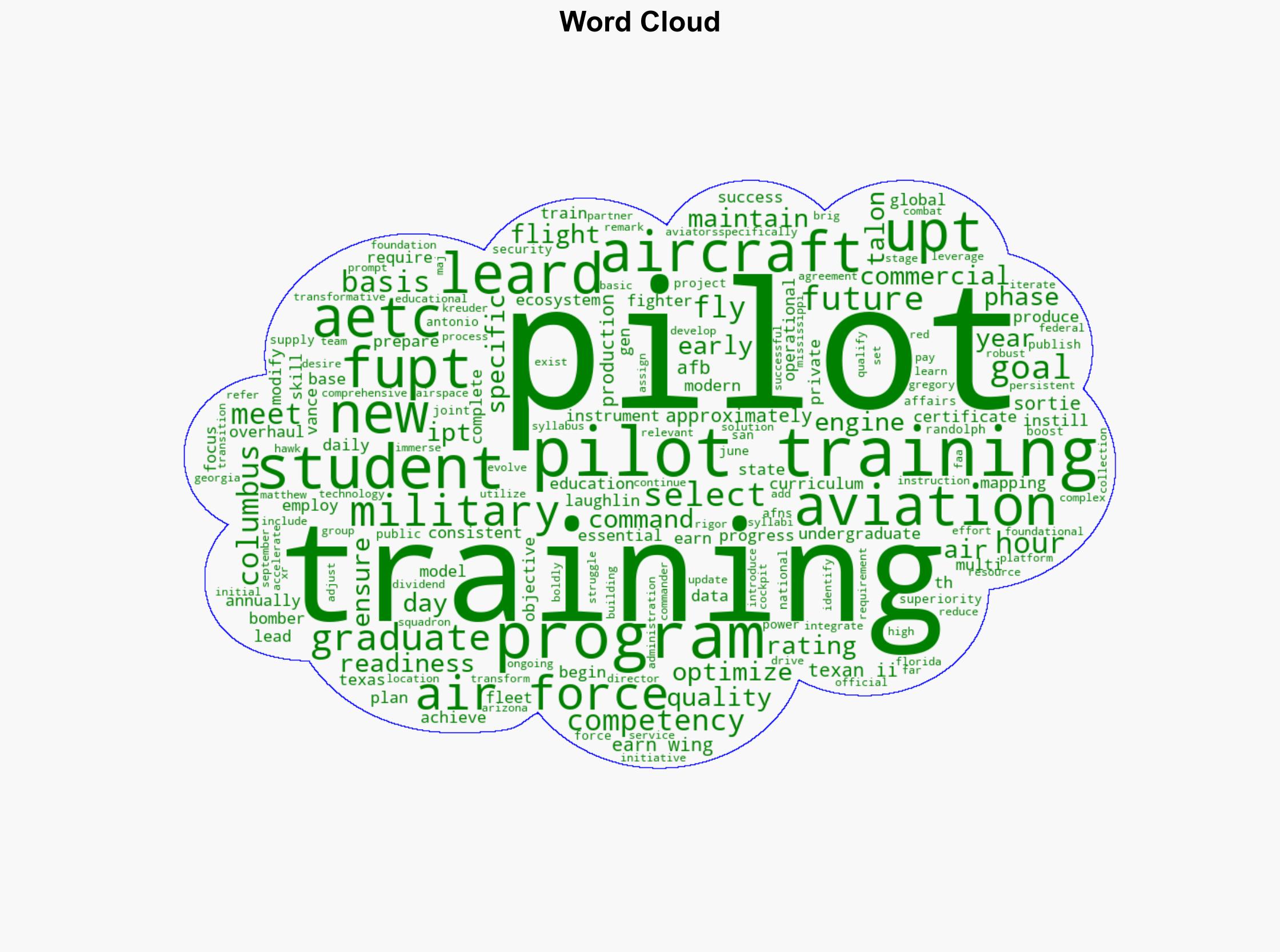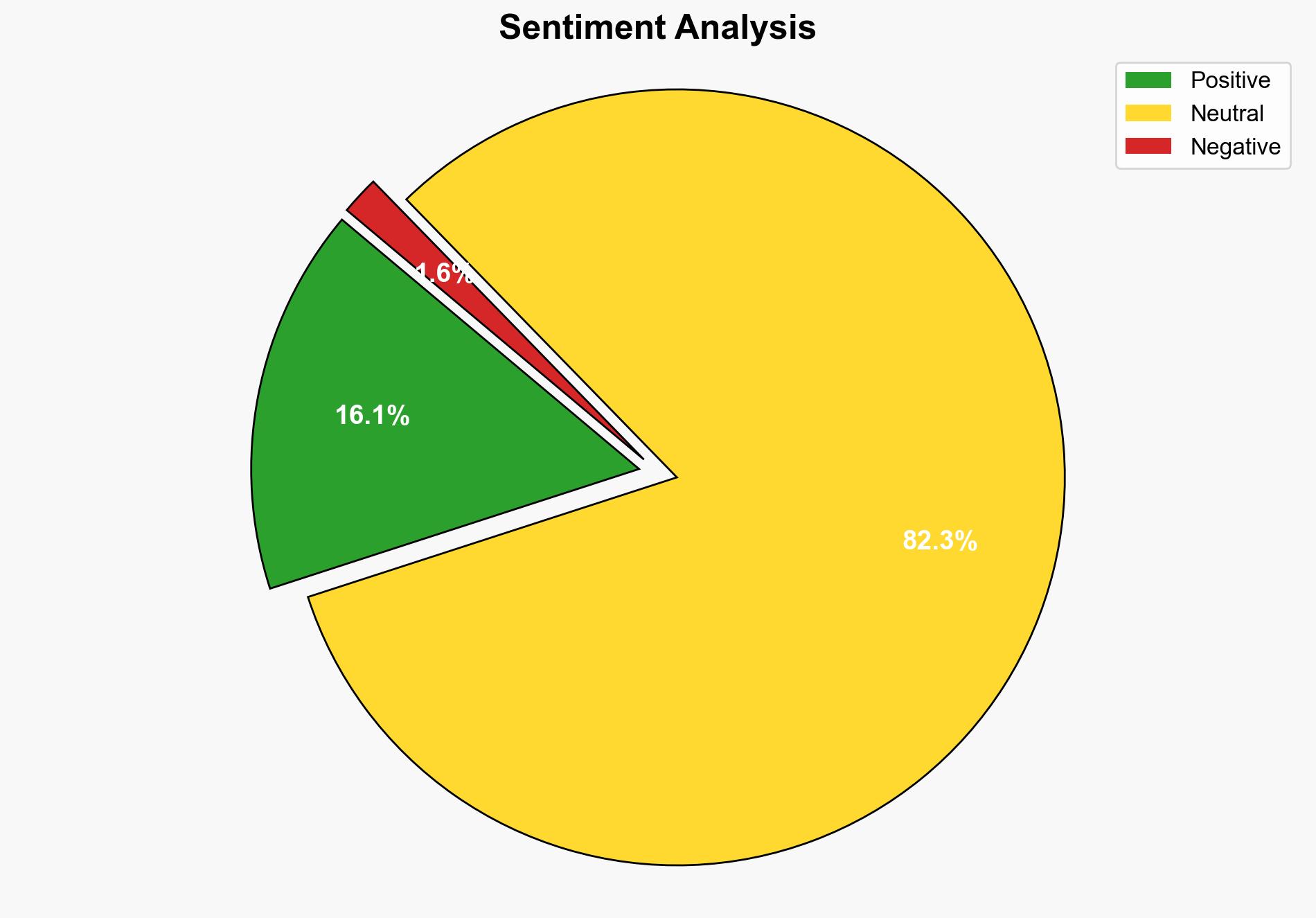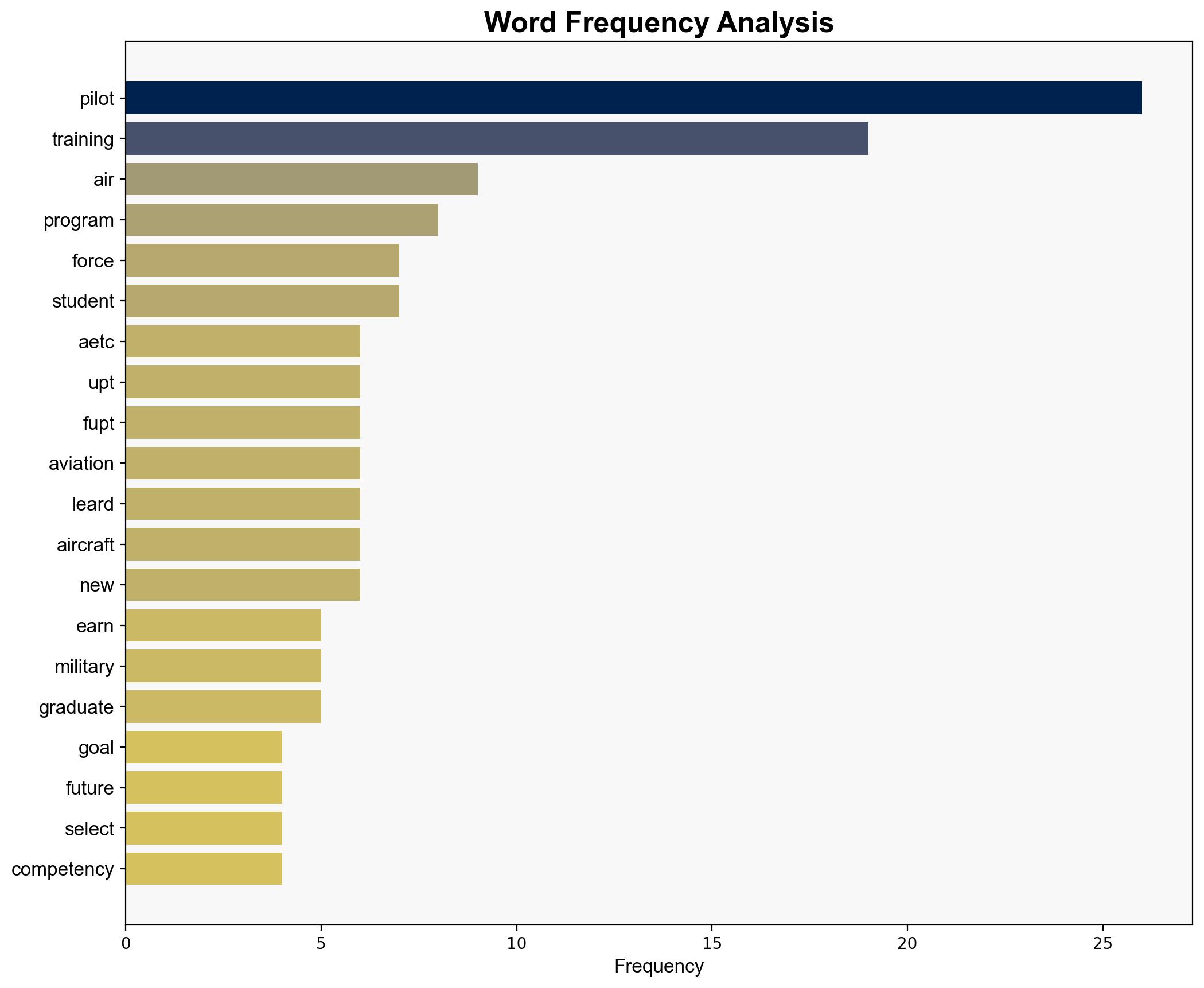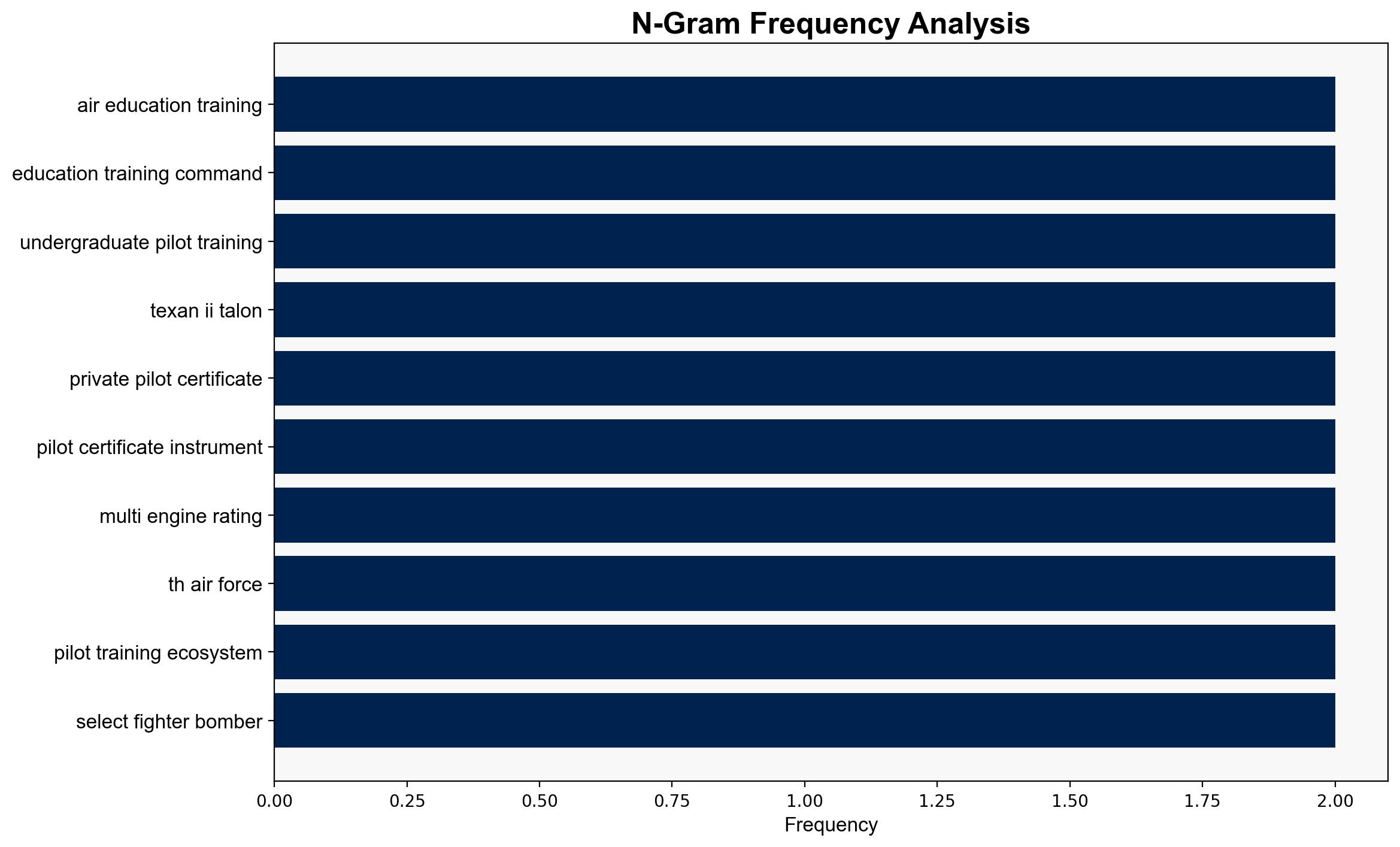Boosting readiness AETC’s plan to train 1500 pilots annually – Globalsecurity.org
Published on: 2025-06-07
Intelligence Report: Boosting Readiness AETC’s Plan to Train 1500 Pilots Annually – Globalsecurity.org
1. BLUF (Bottom Line Up Front)
The Air Education and Training Command (AETC) has developed a comprehensive strategy to train 1,500 pilots annually, addressing the persistent challenge of maintaining air superiority and national security. The initiative involves optimizing existing resources and integrating commercial flight programs to enhance pilot training efficiency and quality.
2. Detailed Analysis
The following structured analytic techniques have been applied to ensure methodological consistency:
Cognitive Bias Stress Test
The analysis has been cross-verified to identify and mitigate any potential biases, ensuring an objective assessment of the AETC’s training strategy.
Bayesian Scenario Modeling
Probabilistic models suggest a high likelihood of successful implementation, with potential challenges in resource allocation and curriculum adaptation.
Network Influence Mapping
The initiative’s success depends on strategic partnerships with aviation programs in Texas, Arizona, Florida, and Georgia, highlighting the importance of collaborative networks.
3. Implications and Strategic Risks
The program’s success could significantly enhance military readiness, but risks include potential resource constraints and the need for continuous curriculum updates. Failure to address these could lead to gaps in pilot competency and readiness.
4. Recommendations and Outlook
- Enhance resource allocation strategies to ensure consistent training quality and availability.
- Implement continuous feedback loops to adapt training curricula swiftly to evolving needs.
- Scenario-based projections indicate that successful implementation could set a new standard for military pilot training, while failure could exacerbate existing readiness challenges.
5. Key Individuals and Entities
Matthew Leard, Gregory Kreuder
6. Thematic Tags
national security threats, military readiness, pilot training, aviation partnerships




